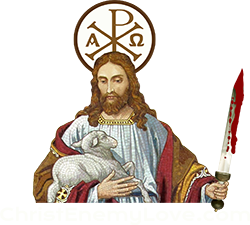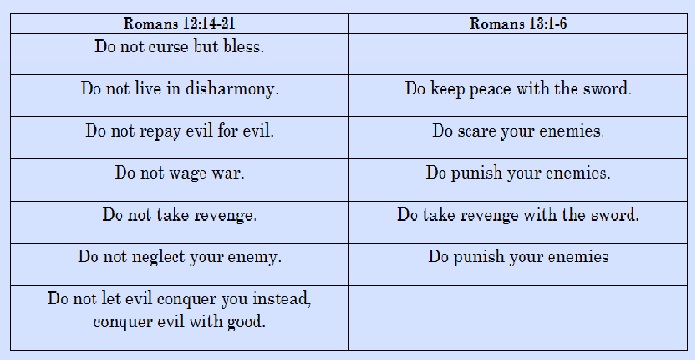Narrative Conflict in the Four Gospels by Robert Beck.
CONFLICT RESOLUTION IN MATTHEW
Along with the David story, the story of Moses is one of the Old Testament precedents important to Matthew in his presentation of Jesus. The Exodus provides an important type for his Gospel. The Moses story, however, is also a prominent instance of the formula story of the banished and returning prince. In fact, it serves to illustrate one of the features of that formula pattern echoed in Matthew’s Gospel narrative.
At the heart of the Gospel narratives there is a moment of refusal of the ways stories have been told. In particular, the satisfaction in stories is typically derived from two impulses found at the conclusion of stories: paying back the villain for the harm that person has been doing to others, and purging the world of the evil that has contaminated it.
Payback and Purge
Moses’s story begins with the massacre of the Hebrew children, just as Matthew’s story of Jesus begins with the slaughter of the boys of Bethlehem. In the Moses story this disaster is answered by the death of the oldest boys among the Egyptians at the first Passover. Here slaying answers slaying—the law of retribution. Payback. In contrast, when Jesus returns to Judea, no slaughter occurs. The Gospel refuses to answer calamity with calamity.
Furthermore, the flight of the Hebrews is finally achieved with the devastation of the Egyptian forces in the floods of the Red Sea. In this, the threat is finally, and completely, overcome. Here we see the other stratagem of purgation from evil, or purge, this time rather literally portrayed. The Moses story thus illustrates another strategy common among narratives for bringing a story to a satisfactory conclusion. But it also is one that the Gospel refuses to adopt. Matthew’s story concludes with neither of these moves favored by narrative tradition—neither payback nor purge.
Probably the most quoted passage in the Bible concerning nonviolence is in the Sermon on the Mount, Matthew 5:39:
“But I say to you, Do not resist an evildoer. But if anyone strikes you on the right cheek, turn the other also.”
It is followed by the injunction to love one’s enemies (5:43–48). The refusal to retaliate in kind is central to another theme of Jesus’s teaching in Matthew, namely, the need to forgive one another. Much of the discourse of Matthew 18 is devoted to an examination of this need. It also involves the refusal to pay back in kind, a refusal made in the spirit of deliberate, unsentimental love.
Matthew dramatizes the teachings in his narrative. Of the three moments we saw concluding Mark’s narrative conflict, Matthew selects two for emphasis: Jesus’s prophetic action in the Temple and his arrest in the garden. In the first he joins the story of the Temple cleansing with that of Jesus’s triumphal entry, which he elaborates considerably. In the second he develops Mark’s account of Jesus’s arrest in the garden with some significant touches. Together with these two we see the refusal of purge and the refusal of payback.
What is Matthew telling his readers? In the context of the post-Temple anger at the time of his writing, he shows Jesus presenting an alternative to the prevailing mood. But there is also a judgment on the Roman tendency to favor total solutions to social problems. Matthew is signaling the bankruptcy of such efforts.
In the garden arrest scene in Matthew we come to the most explicit rejection of retaliatory action to be found in the Gospels. Matthew retains the main elements of Mark’s account, including Jesus’s charge they are treating him like a lestes (insurrectionist). But Matthew elaborates the scene with many changes, the most famous likely being the sword saying:
“All who take the sword will perish by the sword” (Matt 26:52).
This saying of Jesus appears only in Matthew’s Gospel. By itself, apart from its context here, it would simply be a statement of a principle derived from experience in the ways of the world. It states a karma-like law of social interaction. Those who make violence their business tend eventually to succumb to it. It is worthwhile taking a moment to notice this more general meaning, apart from any application to the disciples.
But in context, in Matthew’s Gospel, it is properly seen as a nonviolent saying. Uttered at the precise moment when the option for violent resistance offers itself, it becomes a protest against that form of resistance. In the action of the story, when a sword is raised to retaliate against those arresting Jesus, it is a rebuke to those who would resist with swords. In Matthew’s Gospel the one with the sword is said to be among those accompanying Jesus, unlike in Mark, where the one wielding the sword is a bystander. Thus the force of the saying is directed toward disciples, the followers of Jesus do not act out their resistance in this way.
And yet, more than the disciples are present, hearing this statement of principle. Two parties are involved in the arrest. In addition to the disciples, there are those making the arrest. The principle clearly applies to those who regularly employ violence in addition to those who are directly instructed not to. If this is the case, as it surely seems to be, then we might have a way of understanding what Matthew is doing when he not only recasts Mark’s call for nonviolence but also addressees the theme of exile in his narrative.




